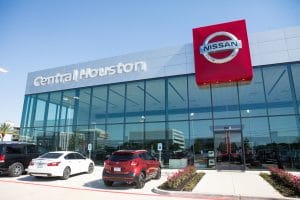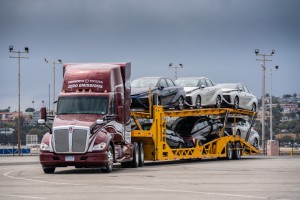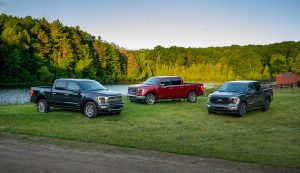The automotive industry has been hammered by the coronavirus pandemic, but despite some calls for a bailout that could resemble the Cash-for-Clunkers deal launched during the Great Recession, a federal stimulus program seems both unlikely and unnecessary, according to the head of data and analytics at J.D. Power.
While U.S. sales fell as much as 50% in March, they have been on mend ever since, coming in at around 15% below year-ago levels last month and, barring another meltdown of the economy could come even closer to normal by year-end, noted Power Vice President Tyson Jominy. If anything, it’s not a lack of buyers holding back an automotive sales recovery, it’s a lack of product, the two-month shutdown of the North American manufacturing network leaving dealers with nearly 1 million fewer vehicles than they needed last month.
And that number understates the problem. There are more than enough sedans and coupes, but there’s a serious shortage of the pickups and SUVs that largely propped things up during the early days of the pandemic.
(Sales drop again in July with Subaru, Toyota leading the pack.)
“We have no cars to sell. Transaction prices are at a record. We can’t build cars as quickly as we can sell them,” said Jominy, noting that many dealers are delivering vehicles to buyers as soon as the truck arrives at their showrooms. “So, I see no need” for a Clunkers-style federal bailout.

Buyers are looking for trucks and SUVs that aren’t in abundance and cars are still not drawing consumers in big numbers.
Jominy and two of his J.D. Power associates appeared during a virtual meeting of the Automotive Press Association on Thursday, outlining the sort of changes they see reshaping the U.S. automotive market in the months and years ahead. The COVID-19 crisis, of course, is contributing to many of those changes, while speeding up others that were already in motion.
On the sales front, Jominy said he expects full-year 2020 new vehicle sales to come in at under 14 million, down from 17.1 million in 2019. But the run rate by year-end should be around 15.6 million, he forecast. And even that were to hold in 2021 that would still make for “a healthy industry and dealers and automakers can still make a lot of money.”
Whether the U.S. market will be able to get back up to the sales numbers seen before the COVID meltdown – five consecutive years topping 17 million – is uncertain, if not unlikely, the Power panel agreed. A variety of factors could play into that, such as a decline in the number of vehicles per household, an increase in reliance on ride-sharing services and the fact that Americans continue to hold onto their vehicles longer and longer. The latter point could be influenced by all the 80- and 90-month loans that manufacturers have been offering during the pandemic.
Another uncertainty is whether the aggressive run up in vehicles prices can continue. Last month, Power estimates the typical new car, truck or crossover carried a transaction price of more than $38,000, about $2,000 more than in July 2019. That said, some other analysts have noted that prices actually slid backwards a bit from the all-time records seen in May and June.
(Detroit’s Three automakers adding more trucks, SUVs.)
One of the things that has helped the industry is that, in contrast to what occurred during the early days of the Great Recession, “credit has not dried up,” noted Jim Houston, Power’s managing director of auto financing.
That said, there have been major changes in the way buyers are shopping for, and then financing, their vehicles. A record number of U.S. car shoppers are doing their research digitally, then lining up financing online, as well. More and more have been completing the transaction virtually, as well. And Houston expects that to continue going forward.
In the new car market, meanwhile, captive finance subsidiaries run by the automakers have taken a much larger share of the lending business, largely due to the lucrative incentives they’ve introduced. While they may be paring back on the most extravagant of those givebacks, Houston sees the captives retaining more power. And that could lead to fewer banks and other lenders trying to compete going forward.
Even the insurance side of the business is expected to see significant changes going forward. As with financing, more and more of the process is going online, according to Robert Lajdziak, who oversees insurance research at J.D. Power.

Sales are expected to improve during the second half of 2020 with a sales rate close to 15.6 million units.
There has been something of a consumer backlash springing out of the pandemic, he noted, driven by the fact that consumers feel they are due more money back since they have been driving substantially less. Insurers appear to be doing a poor job of handling refunds that are, in some cases, mandated by state regulators.
On the longer term, a Power study of U.S. motorists found “59% think they’re going to be driving fewer miles in the future,” and are expecting to pay less as a result. Many are now considering usage-based policies, such as Progressive’s Snapshot, which tracks both how you drive, as well as how much you drive to determine a customer’s rates.
(Average U.S. auto older than ever; buyers delay trading in due to pandemic.)
Going forward, if Americans continue to drive fewer miles, said Lajdziak, there could be a “sharp increase” in the use of such policies.


